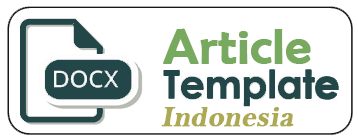Identifikasi Jumlah dan Faktor Timbulan Sampah Di Kawasan Wisata Malioboro
DOI:
https://doi.org/10.47200/jnajpm.v5i1.420Keywords:
Malioboro, tourist area, waste, quantity, factorsAbstract
In preparing Malioboro as a 24-hour tourist area, garbage and waste can cause negative impacts. This study aims to identify the daily amount and factors of waste in the study area, namely the gate of Kepatihan sayap Malioboro area, using a phenomenological and rational approach. In this study, following the thoughts of B. Sommer (1980) about the person center map and place center map so that the movement of Malioboro visitors and the activities of visitors and street vendors in a certain period with a certain study area. The types of waste that most often appear are food and beverage packaging, plastic bags, plastic straws and cigarette butts. The maximum volume of waste that can be accommodated in the trash per day is 3 x 1.458 m3 = 4,374 m3 per day. Awareness of the importance of cleanliness is important through socialization in the form of a flash mob. The next suggestion is to maximize the function of the trash can by separating it according to its type.









